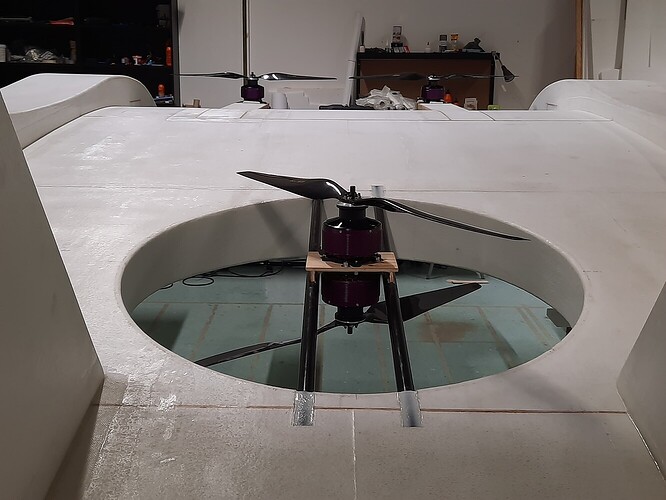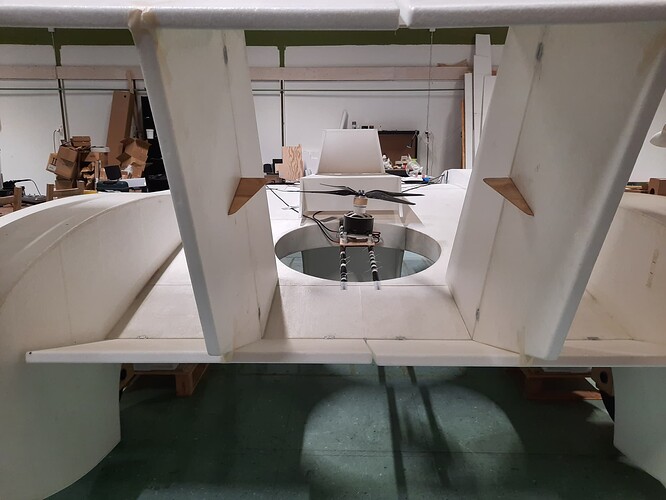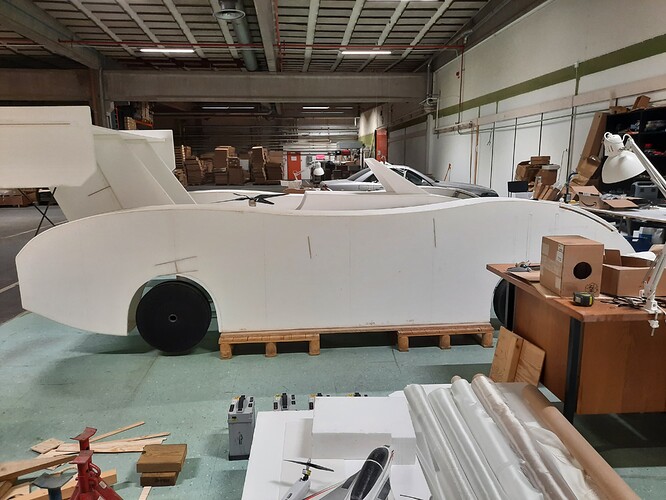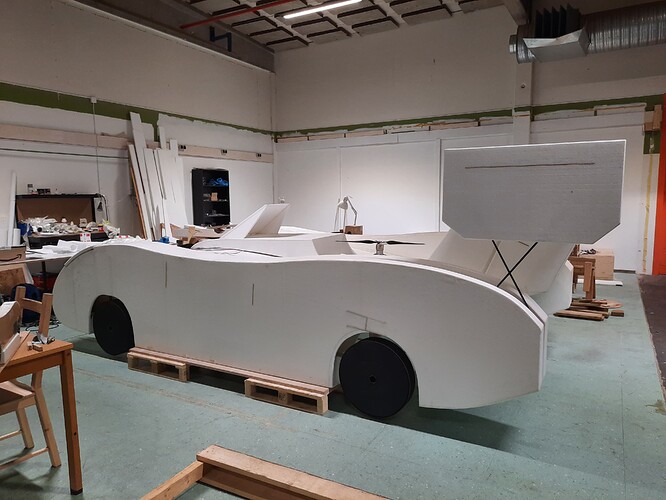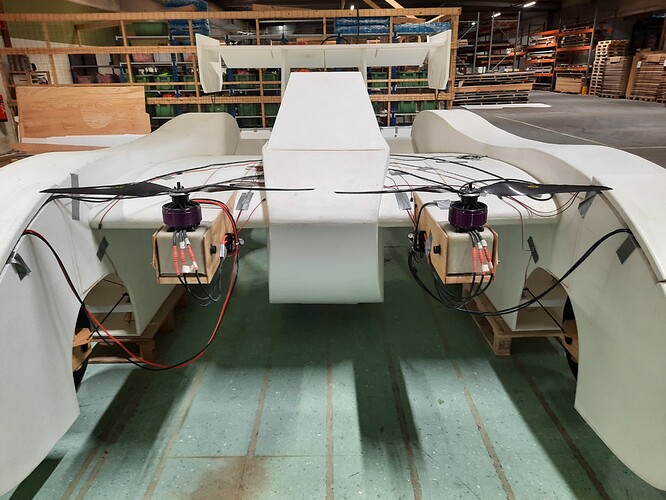Hi, I am developing a very large 200 lb tricopter drone (size of large station wagon) with a lot of rotational inertia. I would like to know if it is possible to fly it manually without a flight controller?
I developed a CAD model of the vehicle and it flies very well in Realflight manually without a flight controller. I have tested the vehicle by placing a narrow board under the vehicle and tried to balance it on top, and compared it with using a flight controller. The motors are at about 40% throttle and the vehicle hovers at 70% throttle. Since the center of gravity of the vehicle is much higher up into the vehicle, this test is forming an inverted pendulum. Tests have shown that using the flight controller the vehicle can be balanced on the beam, with a 1 deg in pitch ~1Hz oscillation. It can also be balanced somewhat using no flight controller, but it requires me to move the pitch stick up and down rapidly to balance it. Keep in mind there is ground effect and the inverted pendulum effects that make it more difficult to balance. Once in the air these effects will be removed and will be much easier to control. I have already programmed the transmitter/receiver so that the vehicle can be flown now without a flight controller. My question are there any other tests I can run to increase my chance of success? How would you approach testing something like this?
The reason I am considering trying this is that if possible it is always best to study an aircraft without a flight controller. Once the characteristics of the vehicle are understood, then it will be easier to adapt a flight controller to make it fly even better
Thanks.
Here is a link to see the vehicle:
Here is a link to see the vehicle being flown in Realflight without a flight controller:
Here is a link to see the vehicle hovering with a flight controller:
Here is a website to learn more about the project:
http://skychaser.se
